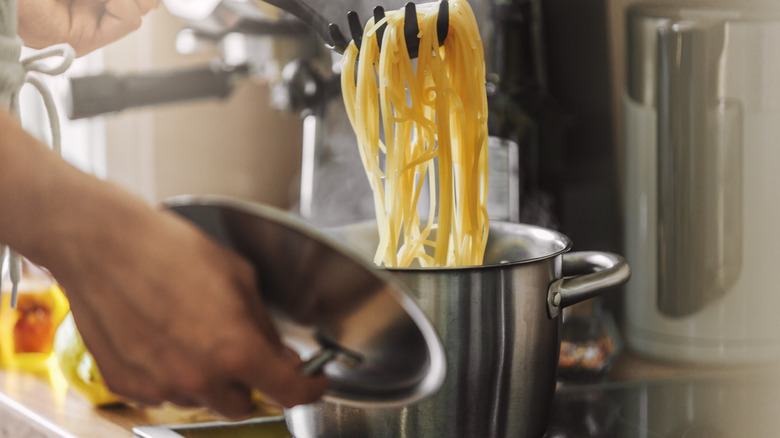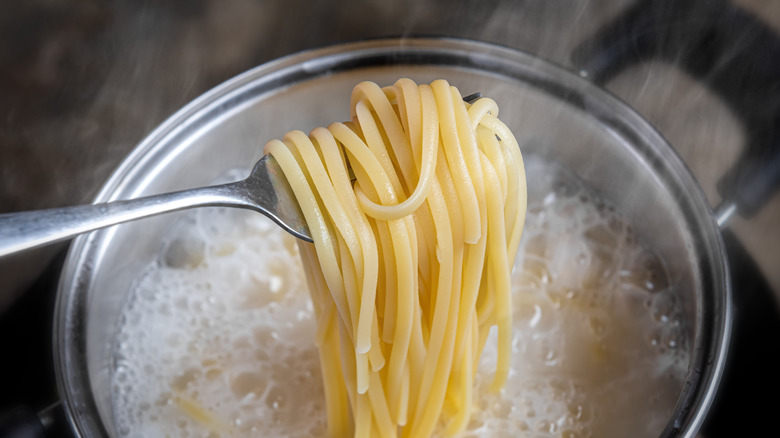Does Throwing Spaghetti At The Wall To Check Doneness Actually Work?
Spaghetti is a simple and quick-cooking pasta, the origins of which are believed to be Arabic and Chinese, as well as Italian, according to History of Spaghetti. This versatile pasta is now a staple in several cuisines, accompanied by the internationally popular tip to throw a strand or two at a wall to check to see if it is cooked. As fun as it appears, Italian scientists tested and debunked the theory, while Senior Culinary Producer Jeanette Donnarumma called it "a big myth" on The Rachel Ray Show.
All it gives you slimy and crusty spaghetti on the wall — or the ceiling — because, as Donnarumma points out, all boiled pasta will stick to the wall whether it's undercooked, perfectly done, or overcooked. Moreover, although this cooking tip has been traced to the 1946 cookbook "You Can Cook If You Can Read," it's nothing more than another pasta myth – boiled spaghetti is always sticky, however, it's no real indication of whether it's cooked.
How should you check if your spaghetti is cooked?
The foolproof way to check if your spaghetti is cooked is to grab a strand (with a utensil) from the pot and cut it in half. You should see a ring and a core in the cross-section. The lighter-colored ring indicates the cooked part and the darker core is the undercooked portion. A thick core means the spaghetti needs to be cooked longer. Al dente spaghetti will have a thin core, and if it is completely cooked the color will be uniform.
Another simple way, of course, is to cook your spaghetti according to the instructions on the package and then chew a strand to see if it's at your desired level of doneness. If you're aiming at al dente spaghetti, do the taste test two minutes short of the prescribed cooking time — it should be soft with a little bite to it. If the spaghetti offers little resistance when it is cut, bitten into, or pinched, it's safe to say that it's cooked.

